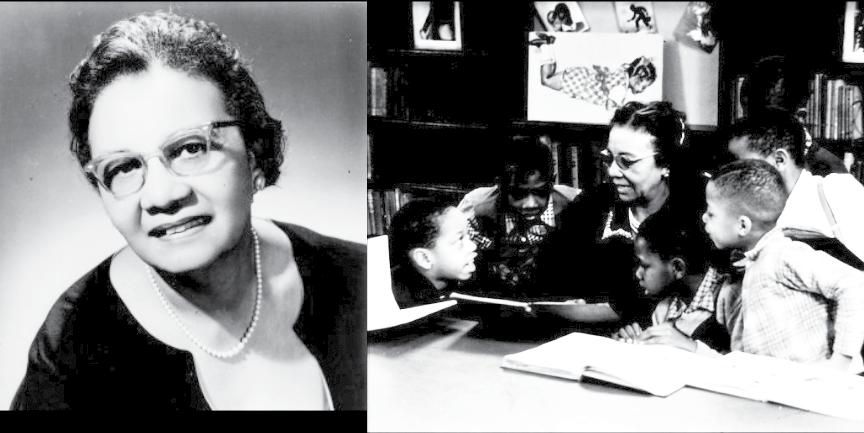
2 minute read
Charlemae Hill Rollins Black Chicago History
Tammy Gibson CNW Staff Writer
Branch.
Advertisement
In 1932, Rollins became the first children’s librarian at the George Cleveland Hall Branch. While working as a librarian, Rollins could continue her education at Columbia University School of Library Science in 1932 and the University of Chicago from 19341936.
Gwendolyn Brooks.
In 1963, Rollins retired as a librarian after 30+ years of service.
At Rollins retirement party, her mentee, Gwendolyn Brooks, wrote entitled “For Charlemae Rollins.”
“Her gift is long delayed.
And even now is paid
In insufficient measure
Nothing is enough
For one who gave us love
Who gave us clarity
Who gave us sentence
Who gave us definition
Who gave us of her vision”
Charlemae Hills Rollins was an advocate that championed and fought against stereotypical and offensive children’s books. Rollins made it her life’s work for Black children to have pride in their heritage and the importance of literacy.
Rollins was born in Holly Springs, MS, on June 20, 1897. Her father, Allen G. Hill, was a farmer, and her mother, Birdie Tucker Hills, was a teacher.
The Hill family moved from Mississippi to Oklahoma. Due to Oklahoma’s lack of educational facilities, Rollin’s parents opened an elementary school. In 1916, Rollins graduated from Western University, a Black boarding school in Kansas. Rollins attended Howard University for one year before returning to Oklahoma.
On April 8, 1918, Rollins married Joseph Walter Rollins, a veteran of World War I and meat inspector. After serving in the military in 1920, the Rollins moved to Chicago. The Rollins lived at 4635 S. Wabash Avenue and, afterward 500 E. 334d Street.
In 1926, Rollins began her career as a junior library assistant at the Chicago Public Library, Hardin Square
As a librarian, Rollins’ mission was to empower and motivate Black children. To nurture the habit of reading, Rollins, a skilled storyteller, would captivate children with her excitement while promoting literacy development and enhancing their communication skills.
Rollins was steadfast against the negative societal images of Black children. Rollins fought against removing racist books, including the Pickaninny Twins and Little Black Sambo by Lucy Perkins. In 1944, Rollins also sent a letter to the American Library Association (“ALA) for hosting meetings that excluded Blacks.
Rollins wrote books that recognized the contributions of Blacks that, included “We Build Together: A Reader’s Guide to Negro Life and Literature for Elementary and High School Use,” in 1941, “They Showed the Way: Forty American Negro Leaders,” in 1964 and “Black Troubledour: Langston Hughes,” which came in second place in the Coretta Scott King Book Award in 1971. Rollins worked with Chicago’s first Black librarian Vivian G. Harsh and writers Langston Hughes and
Throughout Rollins’ career, she received several awards. In 1970, Rollins became the first Black woman to receive the Constance Lindsay Skinner Award from the Women’s National Book Association. In 1972, Rollins became the first Black woman to receive an honorary membership in the American Librarian Association. Rollins passed away on February 3, 1979. Rollins’ life and legacy are remembered in the City of Chicago. In 1989, the children’s room and in 1998, a memorial reading garden at the George C. Hall branch was named in her honor.
Rollins’s papers are housed at the Chicago Public Library, Carter G. Woodson Regional Library, Vivian G. Harsh Research Collection of Afro-American History and Literature.
Charlemae Hill Rollins was a pioneering librarian, writer, and storyteller who dedicated her life promoting self-love and pride to Black children.
“[The genre] includes the greatest number of Negro authors. It is here that all children can build a firm foundation of knowledge of and respect for Negroes. They will be prepared for the first introduction to the concept of different skin color… They now can feel that America is indeed their country.” – Charlemae Hills Rollins
Tammy Gibson is a Black history traveler. Find her on social media @sankofatravelher.







